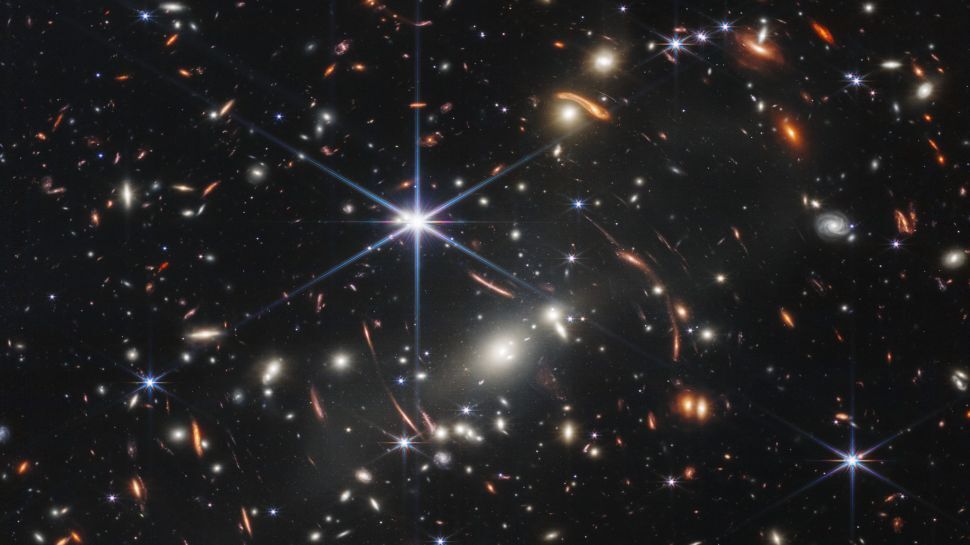1.02.2023

The first publicly released science-quality image from NASA's James Webb Space Telescope, revealed on July 11, 2022, is the deepest infrared view of the universe to date. (Image credit: NASA, ESA, CSA, and STScI)
The James Webb Space Telescope, not even finished with its first full year of observations, has delivered some real stunners. But amid the breathtaking images and unprecedented findings, there was a puzzling claim: that the telescope had detected galaxies in the incredibly young universe. Those galaxies were so massive and appeared so early that they, the headlines claimed, "broke" the Big Bang model of cosmology.
The claim went viral, but as with many things on the internet, it's simply not true.
Now, there's more research to back up the Big Bang. Recently, researchers took a more careful look at the data and determined that the distant galaxies discovered by the James Webb Space Telescope are, indeed, perfectly compatible with our modern understanding of cosmology.
The potential problem with distant galaxies isn't that they exist. In fact, the modern formulation of the Big Bang theory, called ΛCDM cosmology (the Λ stands for dark energy, and CDM is short for "cold dark matter"), predicts galaxies to appear in the very young universe. That's because billions of years ago, there were no galaxies, or even stars, at all. When our universe was much smaller and much denser than it is today, everything was much more uniform, with only tiny density differences appearing here and there randomly.
But over time, those density differences grew, with the slightly denser pockets pulling more material onto them. Over hundreds of millions of years, those pockets formed into the first stars, and eventually grew to become the first galaxies.
In fact, one of the main goals of the Webb telescope was to discover and characterize those first galaxies, so finding galaxies in the incredibly young universe is a point in favor of the Big Bang theory, not against it.
So what's the conflict, then? The apparent tension came about because of the estimated masses of those galaxies. Several were quite large — well over 10^10 solar masses. That is still much smaller than the Milky Way, but for the early universe, they are quite gigantic.
The researchers who discovered these galaxies estimated that their large masses put them in tension with many models of galactic formation and evolution. At the extreme end, the researchers claimed that it might even be possible for no galaxy formation model within the ΛCDM framework to create such large galaxies so quickly.
A matter of some debate
But those claims hinged on measuring a precise distance to those galaxies — an incredibly difficult task at these extreme distances. For the record-breaking galaxies that could be tension with cosmological models, the researchers relied on something called a photometric redshift, which fits a rough light spectrum of a galaxy to a model to estimate a distance.
That method is notoriously unreliable, with simple effects — like excess dust surrounding the galaxies — making them appear more distant than they really are.
To accurately judge if the Big Bang is in trouble, a new team of researchers used Webb to identify galaxies with a much more precise and reliable method of determining distance, known as spectroscopic redshift. This technique identifies the spectral lines of known elements emitted by the galaxies and uses them to measure the redshift, and thereby the distance, to the galaxies.
Using this more accurate technique, the team found a sample of four galaxies. All those galaxies were just as distant as the previously identified galaxies, but they had confirmed, reliable distances. However, these galaxies had much smaller masses: around 10^8 and 10^9 solar masses.
So the question then became, does ΛCDM allow for these smaller galaxies to exist at such a young age in the history of the universe, or does the tension remain?
In come the simulations
Building galaxies is no easy task. While pen-and-paper mathematics can allow cosmologists to chart the overall history and evolution of the cosmos within the ΛCDM model, galaxy formation involves the complex interplay of many kinds of physics: gravity, star formation and supernova explosions, dust distribution, cosmic rays, magnetic fields and more.
Accounting for all these interactions requires the use of supercomputer simulations that take the raw, primal state of the universe as it was billions of years ago and follow the laws of physics to build artificial galaxies. That's the only way to connect what we see in the real world (galaxies) with the fundamental parameters of the ΛCDM model (like the amount of normal and dark matter in the cosmos).
The simulations allowed the researchers to play around with many kinds of models. If no models could generate galaxies of that mass at that age, then ΛCDM would be in trouble.
Thankfully, there were no such problems. The appearance of galaxies with 10^8 solar masses in the early universe was no sweat for ΛCDM, the team explained in their research paper, which has been submitted to The Astrophysical Journal Letters and is available as a preprint via arXiv.
As usual, this isn't the final answer. Astronomers may yet confirm the distance to a very large galaxy in the early universe that may force us to rethink our understanding of galaxy formation, and maybe even the ΛCDM cosmological model. In science, it's always important to keep an open mind. But the exaggerated claims made from the early Webb data aren't enough to worry about yet.
Quelle: SC
